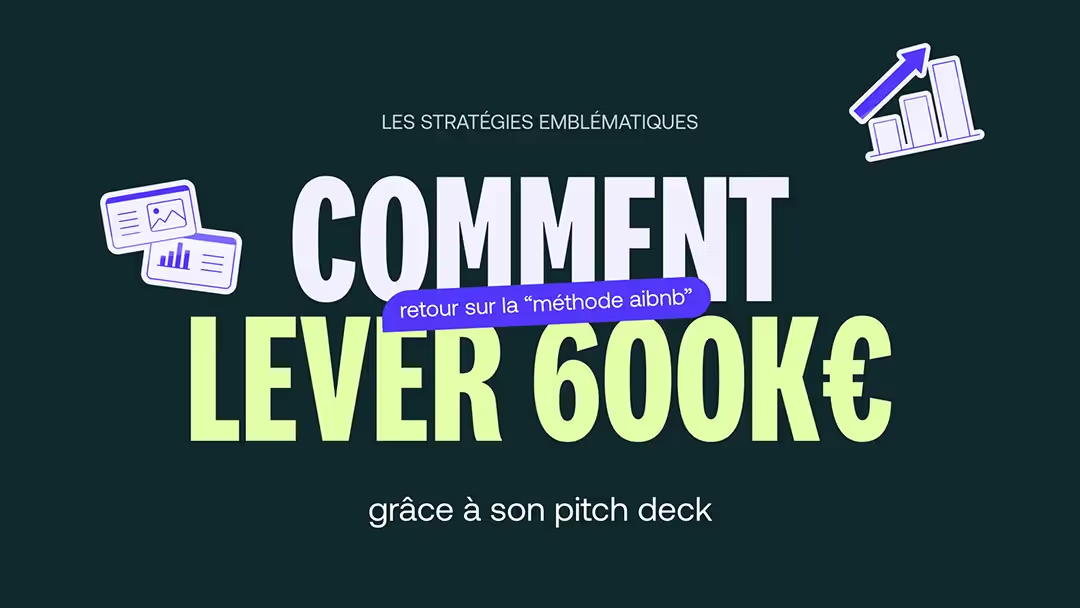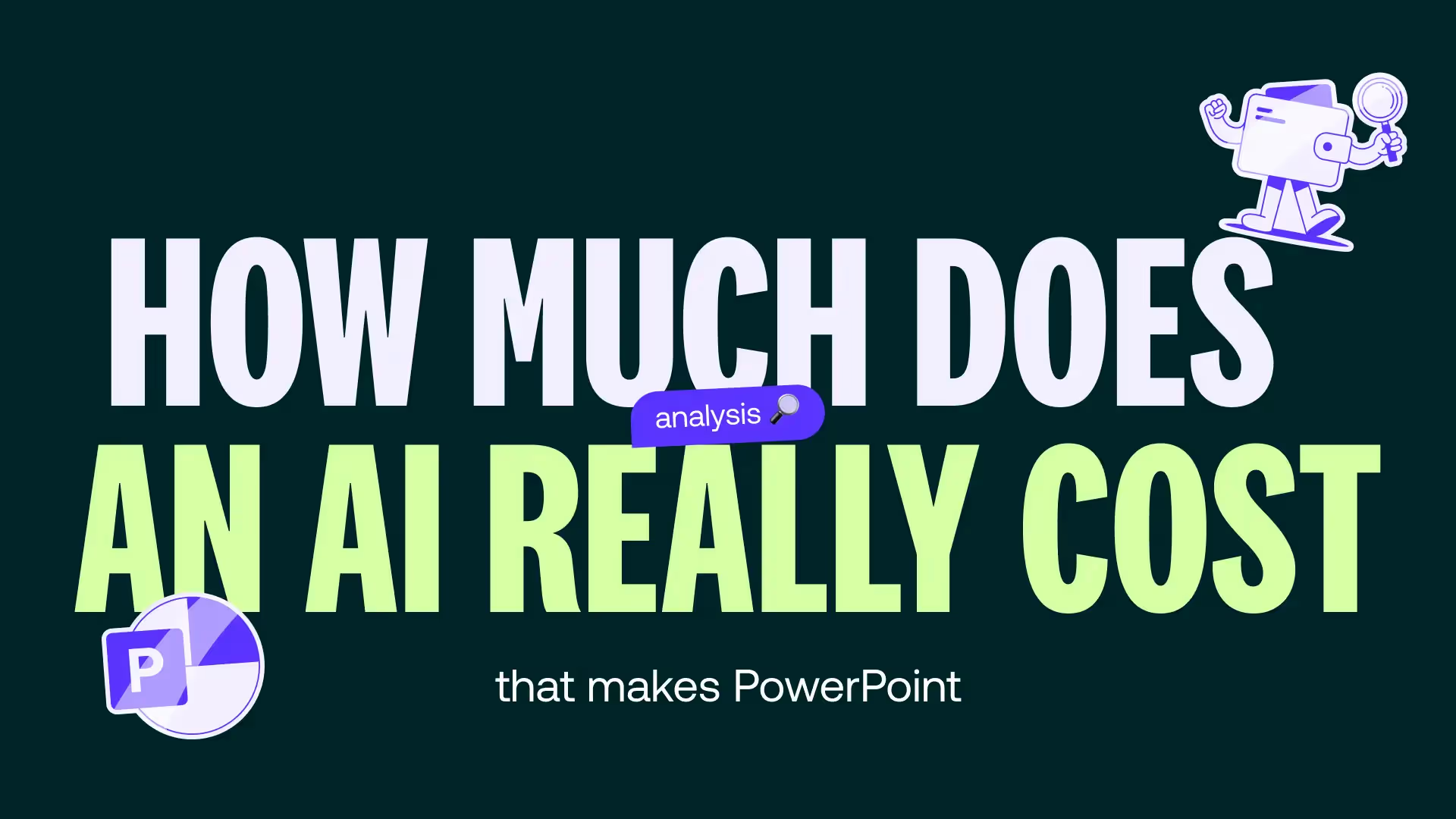How to apply eco-branding to graphic design?
We only have one planet, but an infinite number of possible ways to preserve it.
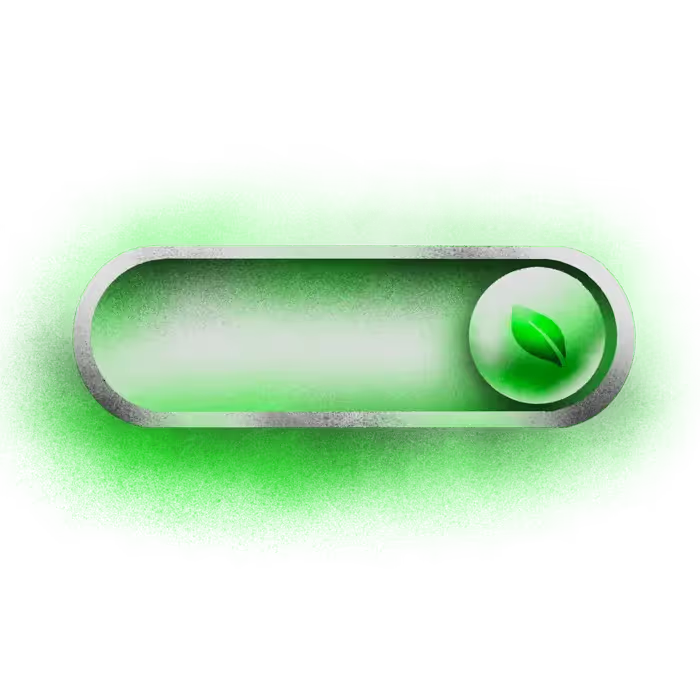
Logos, colors, fonts, illustrations... all the graphic elements that make up a brand's visual identity consume ink, paper, and energy and weigh down considerably The environmental footprint creative businesses and agencies.
Eco-branding is an approach that consists in integrating the environment into the design of a brand's visual identity aimed at significantly reduce ecological and economic costs of their visual communication. There are many things to think about, whether in print or digital.
The impact of graphic design on the environment

An ecological and health threat
Every year, 375 million cartridges end up in landfills around the world. In France alone, they are 60,000 tons of empty cartridges per year that represent an ecological and health threat. Note that ink cartridges are part of the “special industrial waste” category because they contain components that pose a high risk to the environment. The plastic used for a standard ink cartridge can take up to 1000 years to decompose.
Digital pollution
According to ADEME, the Agency for the Environment and Energy Management, digital technology is responsible for 4% of global greenhouse gas emissions, 25% of which come from data centers: data processing and storage devices. This equipment works with coal, which is a very polluting substance that is dangerous to human health.
The concept of eco-branding
Initiated by Sylvain Boyer, eco branding is an approach that allows brands in particular to considerably reduce the ecological and economic costs of their visual communication, and thus allows advertising agencies to create in a more responsible way. Eco-branding is defined around 3 axes:
- Visual performance : a logo, a visual identity or a graphic charter must be effective, recognizable and identifiable by as many people as possible.
- Economic performance : an eco-designed logo can consume up to 40% less ink, thus reducing costs throughout the design, printing and distribution chain.
- Ecological performance : a brand's graphic elements are designed and designed to limit the quantity of ink, thus reducing the number of pages printed.
Eco-branding applies to all aspects of branding, both printed and digital. The implementation of this approach consists in find solutions for reconciling visual impact and ecological impact in very wide fields of brand design (logo, typology, UX/UI...). Let's look at some ideas together.
A clean and minimalist design, a first solution
The first step in eco-branding in graphic design is minimalism. A clean and minimalist design, integrating only the essential elements on a page, consumes less ink when printing and reduces carbon emissions on the Internet. A minimalistic design also optimizes the user experience through faster page loading.
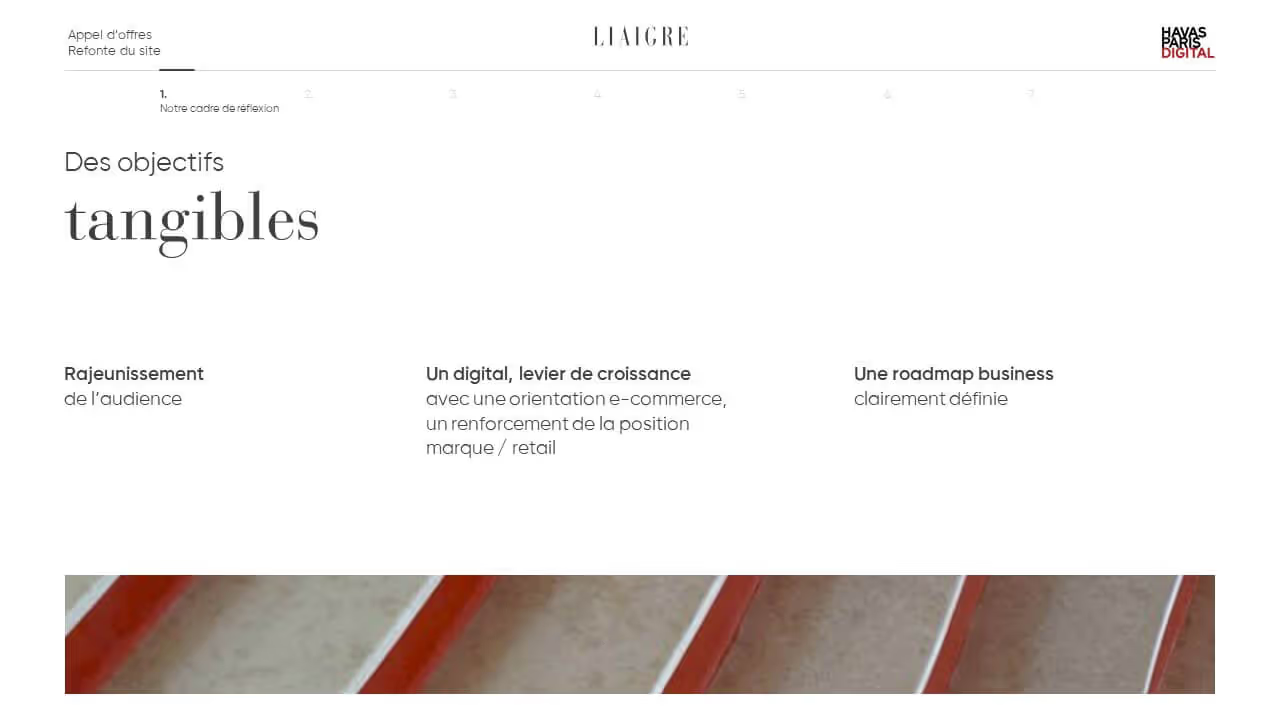
The style of this presentation is called “editorial,” a style that is characterized by a clean layout and lots of white space. As a result, this minimalist style with little content per page makes printing less expensive, and the presentation lighter.
Use ecological typologies
Not all types consume the same amount of ink when printed depending on their size, font, and spacing. The kerning (kerning in English) represents the adjustment of the spacing between letters. Therefore, higher kerning will take up more space on a page and possibly increase the number of page impressions.
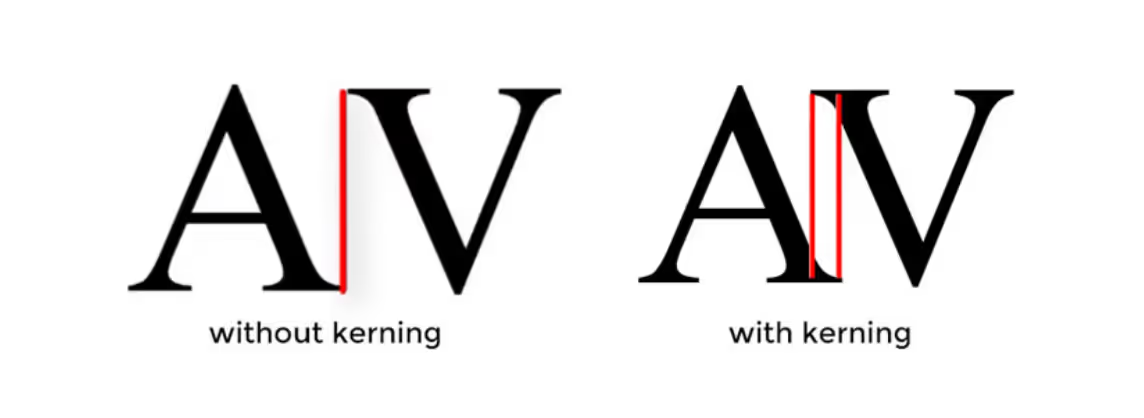
An experiment carried out by two students who colored different fonts with ballpoint pens (one pen per type), made it possible to visually measure the quantity of ink used.
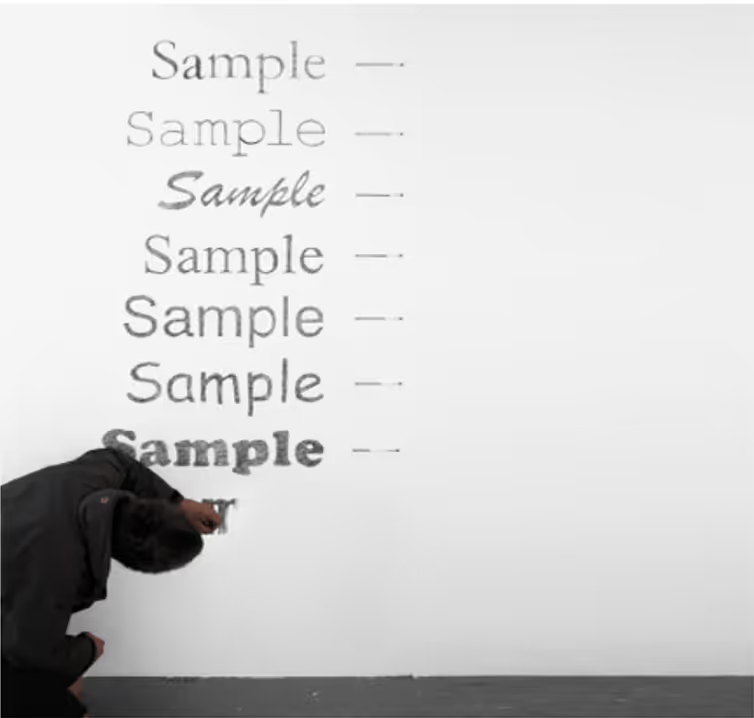
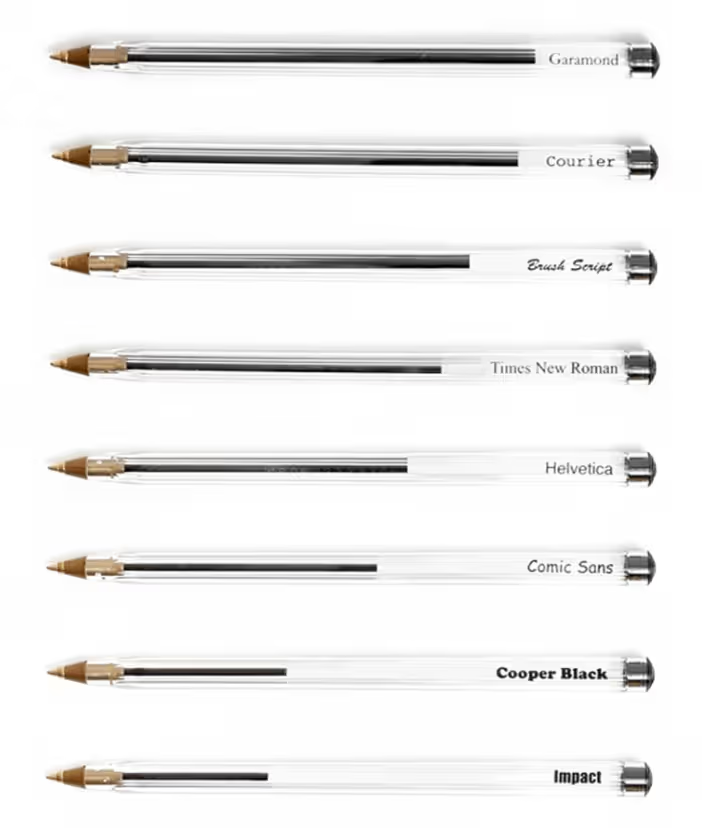
Result: some typologies have proven to be more “ecological” than others. For example, Garamond and Courier types consume less ink only the Impact and Cooper Black typologies.
In 2014, the English wholesaler Ryman Stationery partnered with Monotype Type, a company specializing in typography, and the creative agency Grey to create ecological typography. It is the first “eco friendly” font dedicated to sustainable development. This typeface called Ryman Eco has the particularity of using much less ink than all other fonts thanks to a combination of solids and voids. According to its designers, using this type of letterpress saves 33% of ink when printing a document.
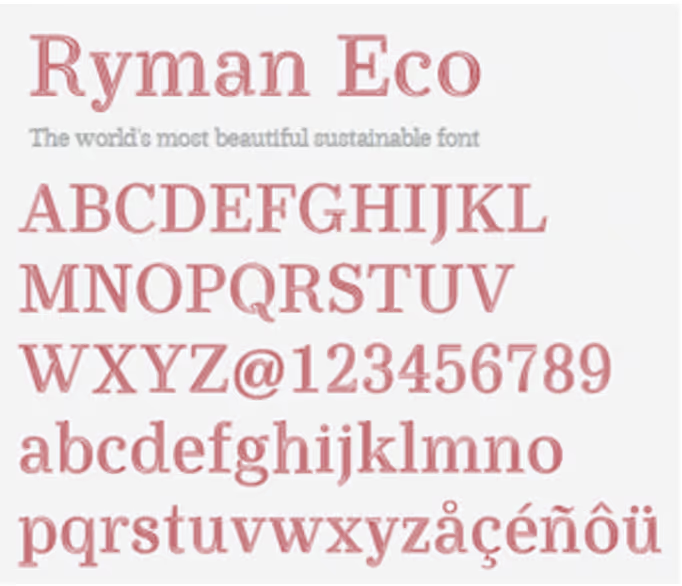
Design an ecological logo
The choice of logo or layout templates, generating less ink and therefore less pollution, is an integral part of eco-branding. One of Sylvain Boyer's key concepts consists in reinvent the logos of major brands in order to make them consume less ink when printing without changing the essence of the brand.
Famous brands such as Nike, Louis Vuitton or Starbucks have changed the logos of their packaging in exchange for lighter variants. using up to 40% less ink, thus influencing the entire design, printing and distribution chain. The approach is far from being trivial, especially for big brands that print their logos on thousands of communication media every day.
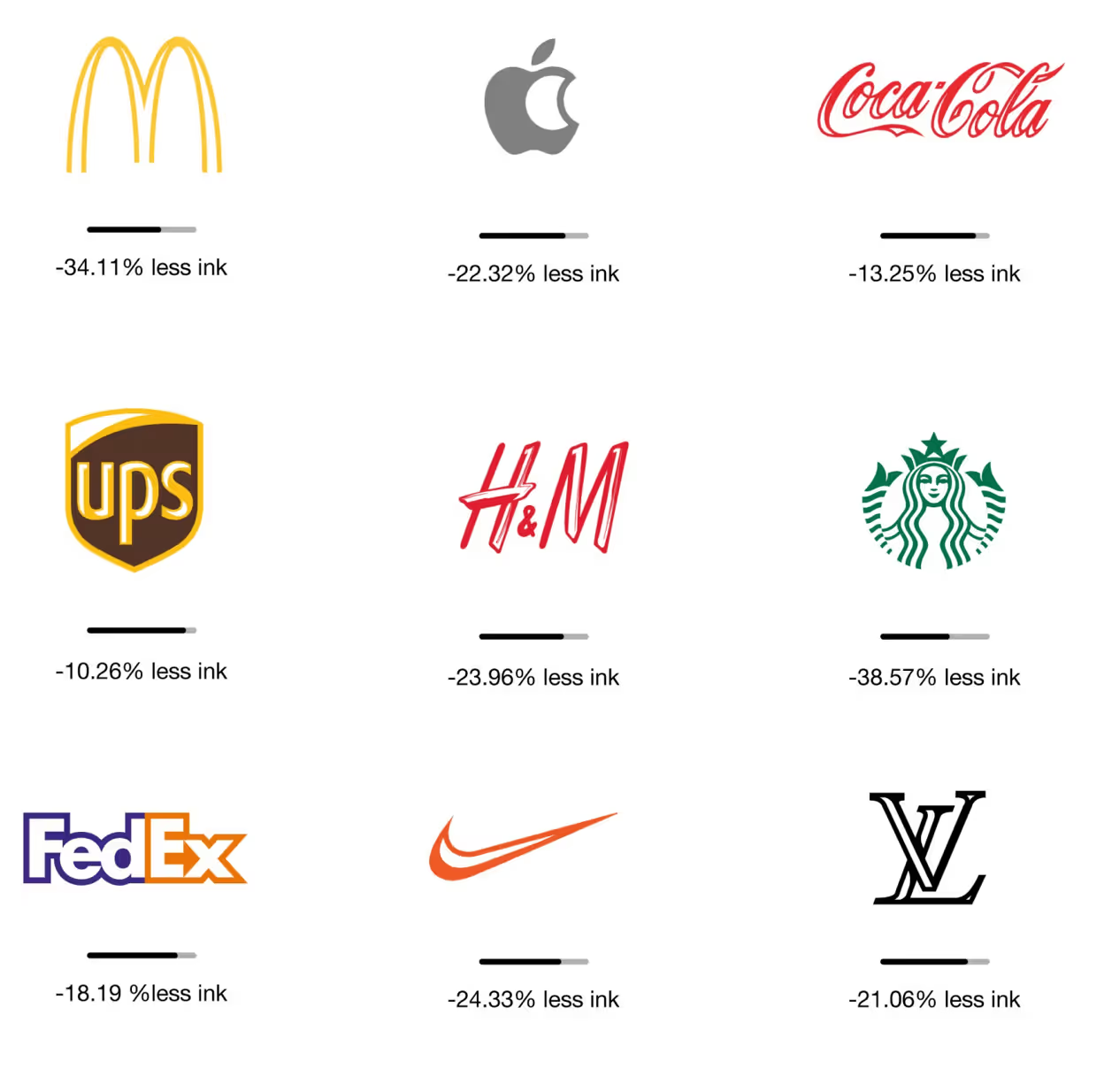
Avoid flat areas of color
By avoiding The flat areas of color and playing with density and contrasts, it is possible to considerably reduce the ink used. It is interesting to note that when you reduce the intensity of the black from 100% to 85%, you reduce ink consumption by half without affecting reading. The visual impact remains just as strong, for a significant saving on large volumes of prints.
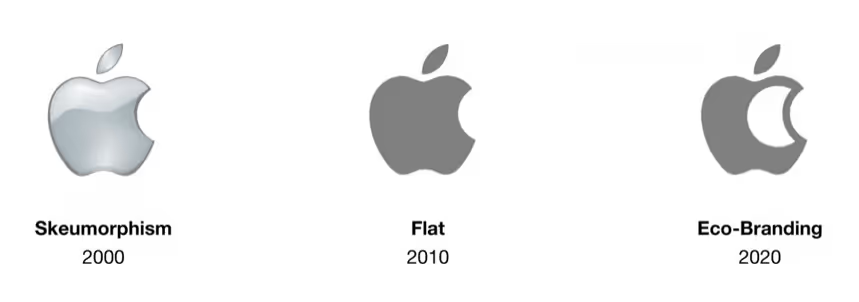
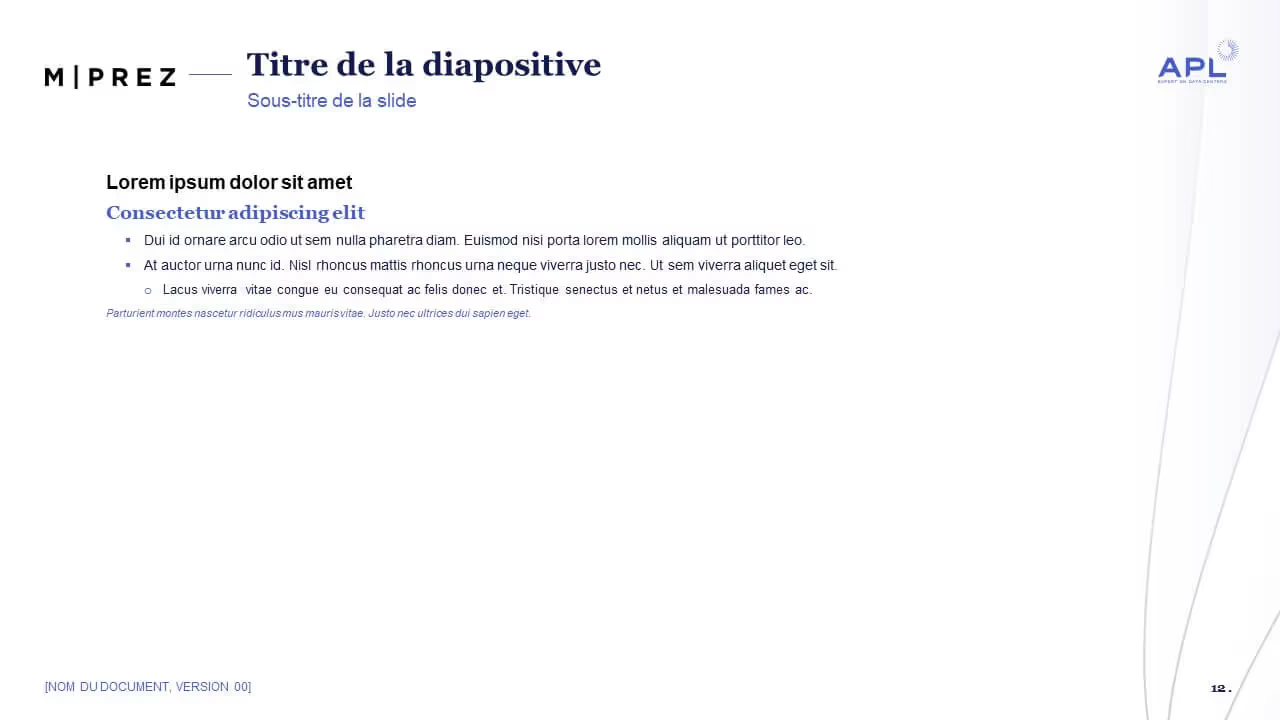
This presentation uses a very light, refined template, without flat areas, with few images in order to cost little ink but is at the same time very contrasting for good readability.
Print without ink when possible (embossing or embossing)
The embossing (also called embossing) is a finish that can be applied to many supports: paper, cardboard, fabric... in short, any shape memory material. Embossing is used for reading in Braille, but also for marketing materials: business cards, goodies, flyers, etc. The process is simple, it consists of Give relief to supports by pressure.
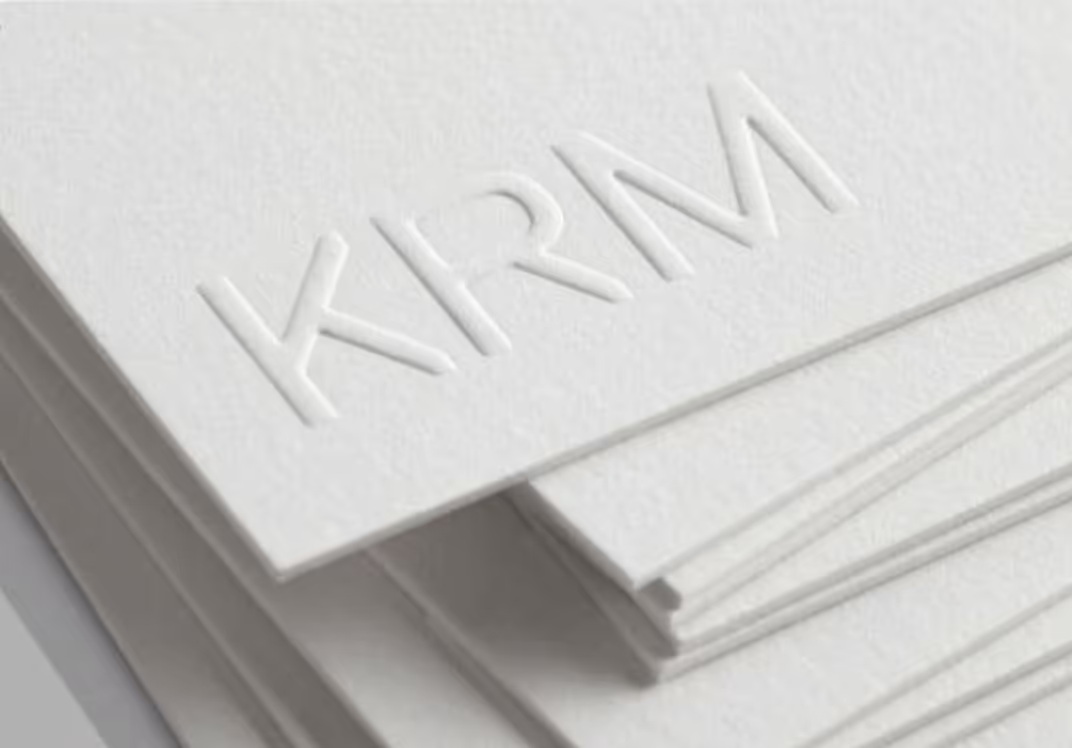
Promoting ecology through graphic design
Graphic design also has a role to play in awareness-raising to environmental issues. In particular, it can be used within the framework of responsible communication, by promoting products, services and actions with a positive impact.

Rethink the design of your UI
A user interface (UI) that reduces the use of space on the server and limits energy consumption is preferred. With the rise of OLED screens, black is proving to be much less energy-consuming than white colors. In fact, Black on OLED screens consumes less power because the LEDs that make up each pixel are off, unlike a white display where the LEDs have to light up.
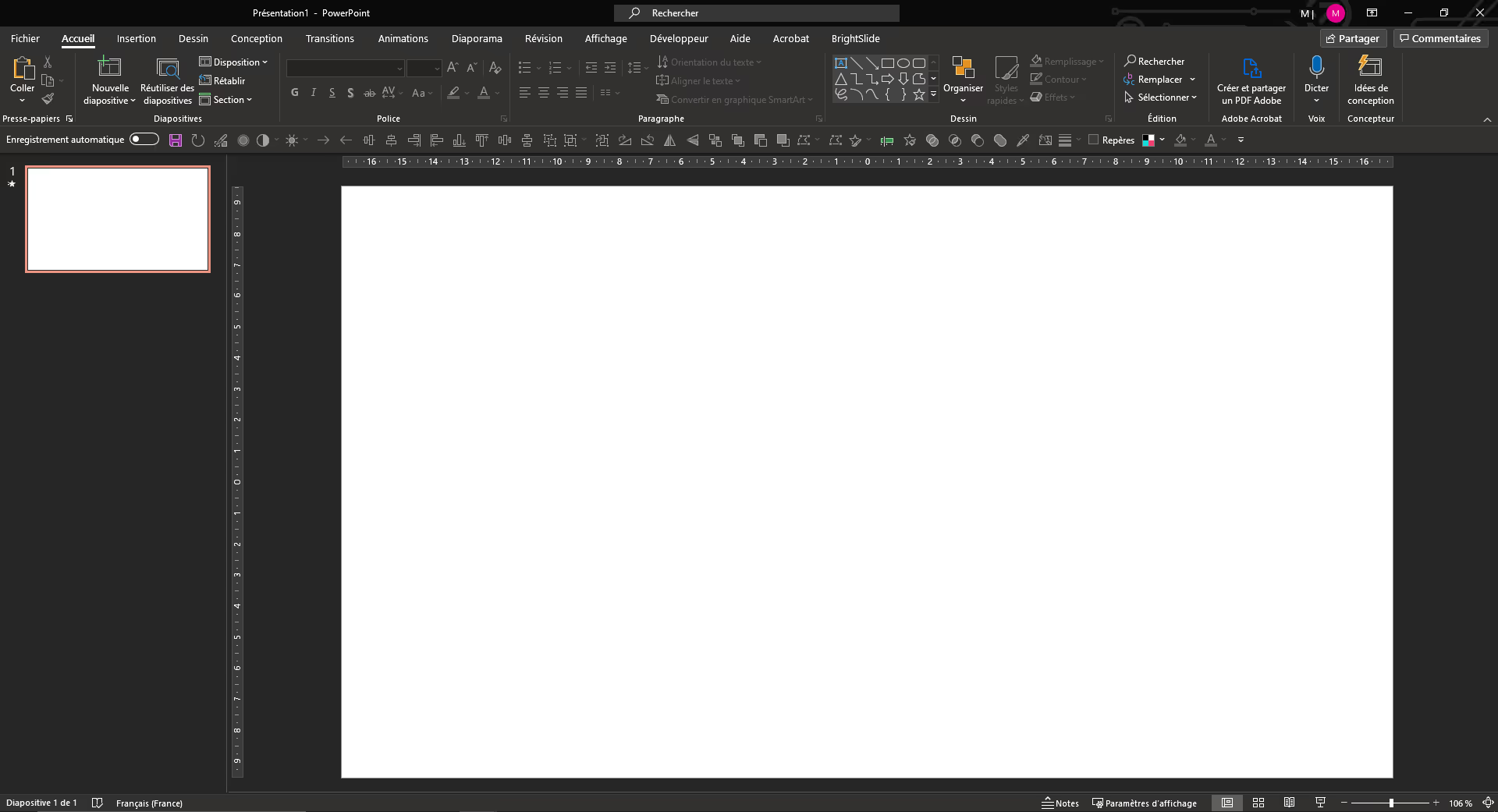
Choose a dark theme (dark mode) within the user interfaces of software and/or applications thus makes it possible to limit luminance and thus to reduce energy consumption.
Always with a view to saving energy, making reducing the size of files and improving web performance a priority in digital projects makes it possible to reduce the ecological impact of applications and websites, the challenge being to optimize its web and digital graphic elements, so as not to overload the servers.
Prioritize the use of SVG files
Among the various image file formats, It is preferable to favor the SVG format (Scalable Vector Graphic). SVG files fall into the category of vector graphics; in addition to taking up less space than PNG and JPEG, they allow you to change their size without reducing image quality.
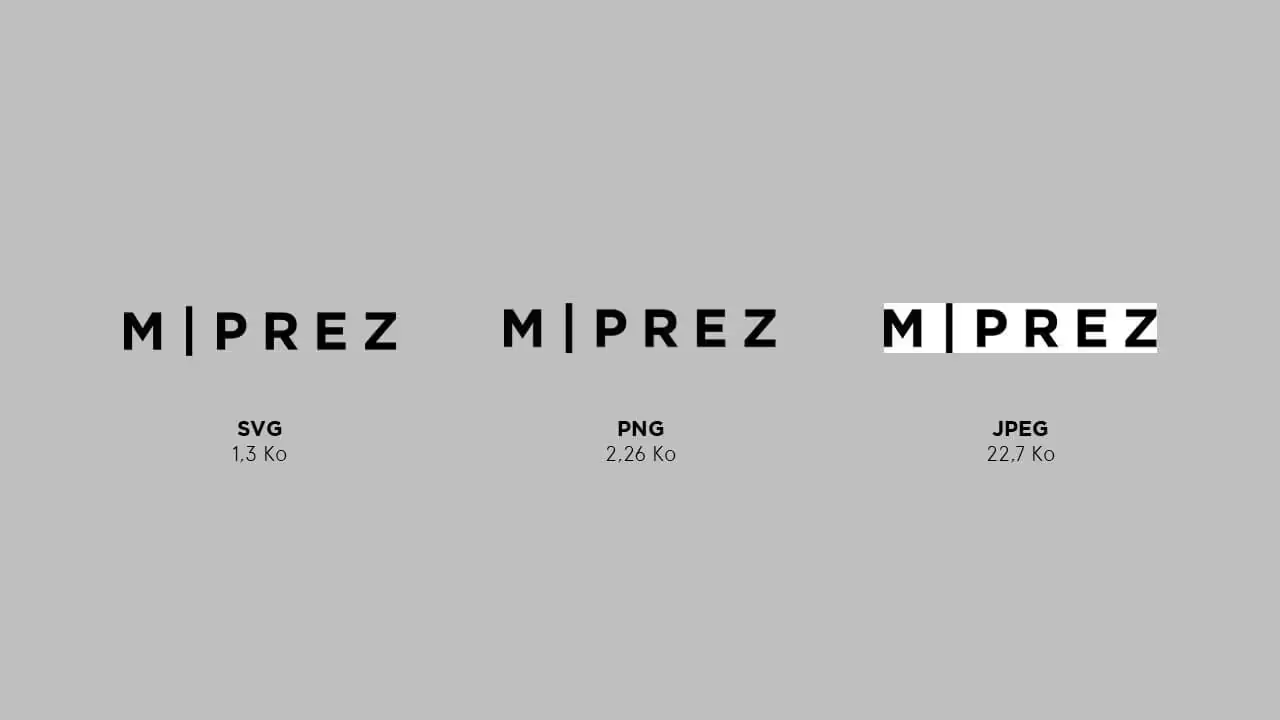
Reduce file size
It is often possible to reduce file size significantly without affecting the quality of the image. There are several techniques to reduce the weight of media and thus reduce the consumption of space and storage energy on server hard drives. In the tutorial below, we show you how to compress your media (images and videos) in PowerPoint to optimize your presentations.
Tutorial for compressing media in PowerPoint by Bessy de M PREZ
Optimizing the impact of your website
A website has a significant impact because it is hosted on servers that consume electricity and energy. On average, a website generates 4.61 grams of CO2 on each page viewed, tools like websitecarbon.com allow you to discover the quantity of CO2 produced per visit on its website. Here are some ways to make your website less energy-consuming and more environmentally friendly:
- Prefer a local hosting provider or a green hosting provider that will use renewable energies to run data centers.
- Promote a simple and refined design for better ergonomics.
- Lighten your website as much as possible by optimizing the code as well as The size and weight of the images.
- Limiter the use of images and videos and prefer the use of icons to images.
- Opt for a responsive website, i.e. with a display that adapts to different screens (computer, tablet, smartphone).
- Use only useful features, plugins increase the code of web pages and extend their loading time.
Rethinking a brand's visual ingredients in advance to limit its ecological and economic impact while maintaining or amplifying its visual impact is the objective of eco-branding.
Whether through lighter visuals or darker user interfaces, eco-branding is above all about creation: it is about creating while taking into account its ecological impact.
This approach, which represents a real opportunity for businesses, must be integrated from the beginning of the branding process and will undoubtedly give birth to a new generation of creators!
Our agency is at your disposal for any advice on the content and format of your presentations.
See you soon for more tips for your Prez'.
Ce qu'il faut retenir
What you need to remember:
- Eco-branding is the art of communicating effectively while protecting the planet.
- Purifying, reducing typo spaces, or even choosing the least greedy font, a thousand ways to reduce your environmental impact.
- Responsible communication starts with a responsible logo.
- Think about your files! We choose SVG and we reduce the sizes!


